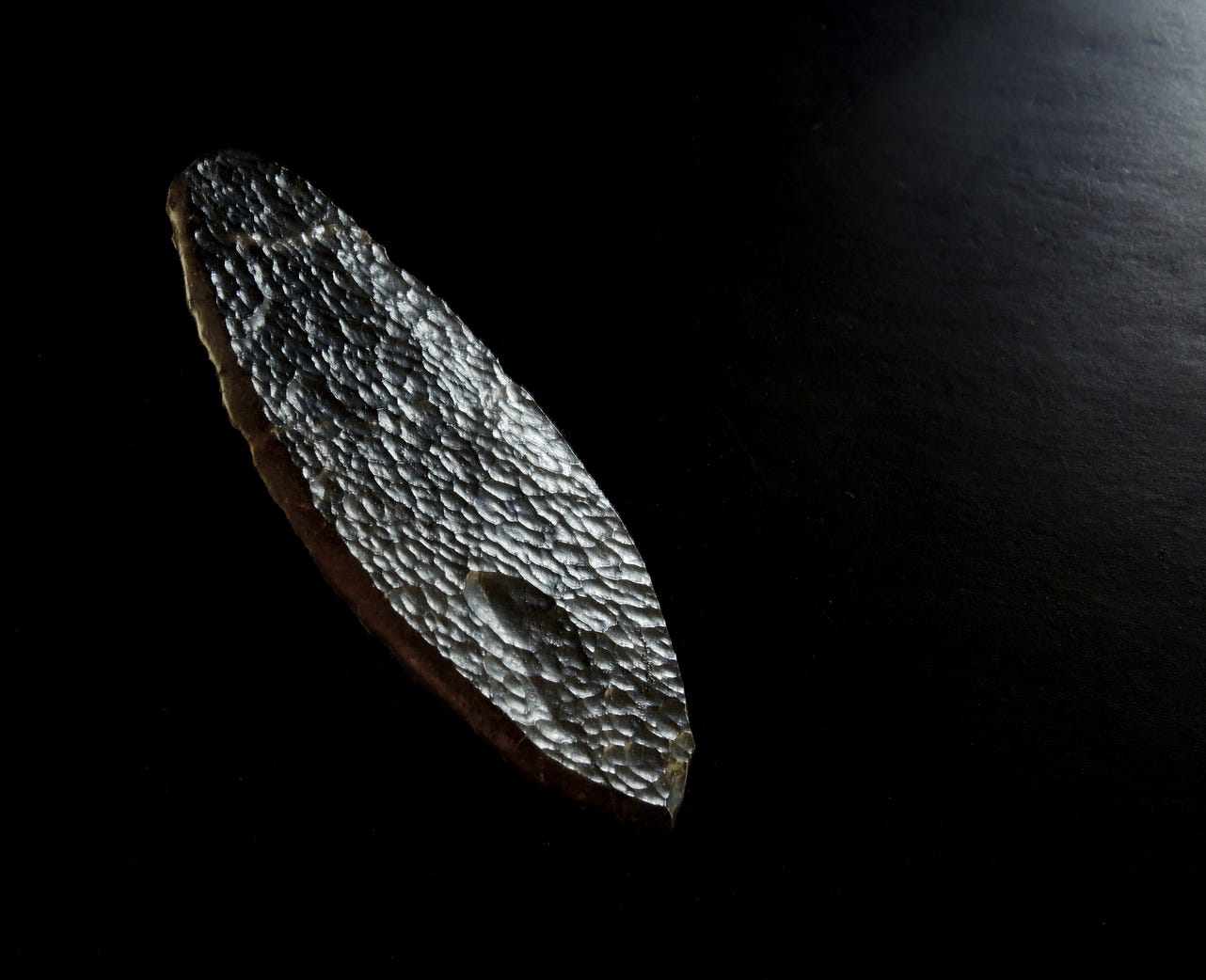Moving fluids have erosive force, not so much directly, but by virtue of a load of small solid particles that they loft and carry, providing a kind of turbulent, flying sandpaper that chips and grates at whatever it hits. The results are clearly visible when fast streams flow over solid bedrock, eroding smooth surfaces, potholes, and scalloping. It is not immediately obvious why fast-moving water does not simply polish the bedrock into an expanse of smooth surface, rather than potholes, scoops, and scallops. The answer is related to laminar and turbulent flow of the water. When water flows over a solid surface, friction forms a slower-moving, stable boundary layer (laminar flow) parallel to the surface, and the suspended particles simply move along parallel to the surface, robbing them of most abrasive force. However, a small irregularity in the solid surface can lift the laminar boundary layer to allow the turbulent layer and its abrasive load to contact the surface immediately downstream. The abrasion creates an elongated dip in the solid with a steep slope upstream and a lower slope downstream. A swarm of such dips forms what we perceive as a scalloped surface. The length of the scallops is inversely related to the velocity of the water and directly related to its viscosity.
The same principles and actions apply to any moving fluid. On earth, that means only two—- water and wind. I suppose ice ought to qualify, but there is little information on scallop formation by ice, so this leaves wind for consideration.
All images in this essay are wind-polished flint or chert from the Namib Desert of Africa
Wind erosion is most important in arid zones because the cohesion that water provides between sand grains is mostly absent, so that wind can loft and transport soil particles, piling them into dunes or sand plains. But given the right conditions, wind-blown sand can create scalloped features just like water, but on a smaller scale. The Namib Desert in southwestern Africa provides just such conditions. Here, the southwestern to southeastern winds have been moving sand northward from the mouth of the Orange River for about 50 million years, creating one of the largest sand seas on earth. The dunes have blocked several streams that once flowed off the interior plateau to the sea, so that when the rare rains bring these streams to life, the water ponds on the landward edge of the dune seas. But about 1000 km north of the Orange River, floods on the Kuiseb River sweep its bed clear of dune sand that has drifted into the bed in between floods. As long as the river flows every few years, as it has for a very very long time, the dunes cannot cross the river, and the 50-mile-wide plain north of the river remains dune free, a flat, glaring white gravel plain that contrasts with the deep red dunes to the south.
In these plains and in the inter-dune plains of the of the Namibian sand sea, all objects are subjected almost daily to sand-laden winds that pummel all exposed surfaces. These plains are littered with flint and chert pebbles that lie on the surface for perhaps centuries, until flipped by a passing oryx antelope. When the wind blows over these homogeneous surfaces, it forms laminar boundary layers, and just as with water, small irregularities in the surface cause these laminar layers to lift off, exposing the surface to the turbulent battering and chipping by the hurtling sand grains. As in streams, the elongated scallops have a steeper slope on the upstream than the downstream slope and are longer when wind velocity is higher. The much lower viscosity of air assures that the turbulent eddies are shorter than in water, creating scallops on a much smaller scale, shorter and more finely structured. In addition, wind shifts direction more easily than water in a stream, making wind-abraded scalloping less directional.
Humans have applied the abrasive properties of wind-blown sand to abrade everything from paint to glass to metal through the process of sandblasting. By taking advantage of differences in hardness and exposure, it is even possible to create three dimensional sculptures. In the Namib Desert, sandblasting has a history of millions of years. We should not be surprised to find occasional pieces of 3D art created by centuries of wind.







